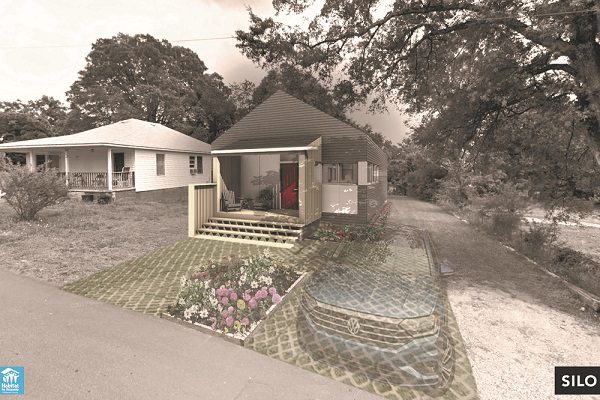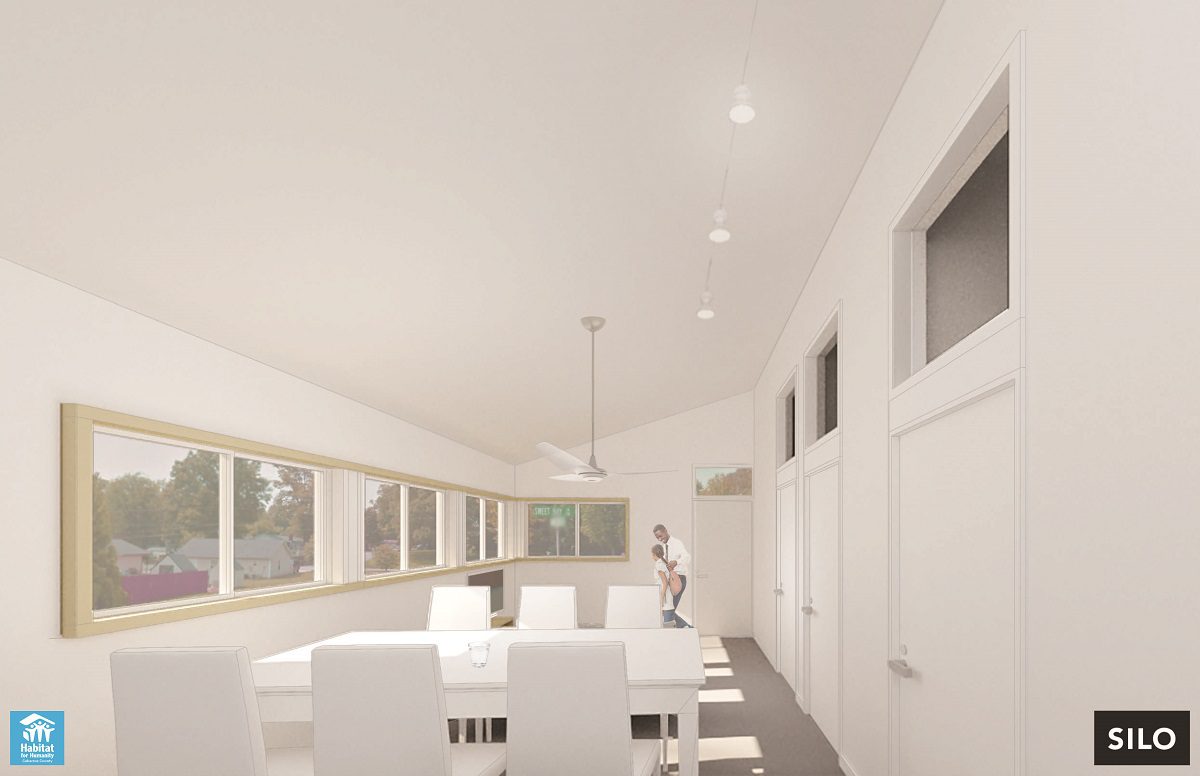Professor’s Firm and Students Design Habitat House Prototype

More than 18 months ago, Habitat for Humanity Cabarrus County was looking for help in rethinking the design of their houses to be more efficient and more affordable.
Associate Professor of Architecture Marc Manack was intrigued by the challenge and took on the task pro bono through his firm, SILO AR+D, enlisting the participation of two undergraduate architecture students who are designers with the firm, Amelia Gates and Nick Sturm.
While Habitat Cabarrus has several prototypes for its volunteer-built homes, Manack chose to redesign the prototype that is most often built: a three-bedroom, two-bathroom model. By strategically “taking out little pieces of square footage here and there, without compromising space and functionality,” he says that he and his team were able to reduce the square footage by more than 100 square feet and construction costs by about 15%. And not only does the new house “keep the spirit” of the original, but it adds design elements, like a vaulted ceiling and a consolidated living space, that add aesthetic appeal and offer advantages such as better cross ventilation and natural light.

“Habitat Cabarrus said that they were willing to be innovative, and that turned out to be true,” Manack says.
As a designer with SILO, Sturm had worked on previous projects, but he says that this project was special because of its connection to the community.
“I became more aware that there are many people working to make their neighborhood a better and more inclusive community. By seeing Marc’s involvement in Habitat for Humanity, I saw that it is crucial to be aware of the impact a building has on the community and what one can do to better it. Good design and good quality should be a hallmark of any home in America.”
Gates had joined Manack’s “Good Cheap Fast” class last academic year, helping design and build The People’s Porch, a community pavilion in West Charlotte. In the Habitat Cabarrus project, she particularly enjoyed working on a house.
“Great design can create a peaceful atmosphere in a home, changing the everyday lives and functionality of a family. This project taught me that a well thought-out house can truly affect how a family operates, and the importance of making space intriguing regardless of budget.”
The SILO team made its first presentation to Habitat Charlotte in August 2019 and continued to work throughout the past year. They are now completing the construction drawings, and Habitat Cabarrus has chosen a site for the build, which will take place in the spring. Manack hopes that additional UNC Charlotte architecture students will have the opportunity to join Habitat volunteers to build the new prototype.
Gates and Sturm intend to study abroad this spring in the School of Architecture’s Rome studio program, but may join the build if that program falls victim to the coronavirus. Either way, says Gates, she was “proud to be a part of a project that was about giving back to the community and improving the livelihood of families.”